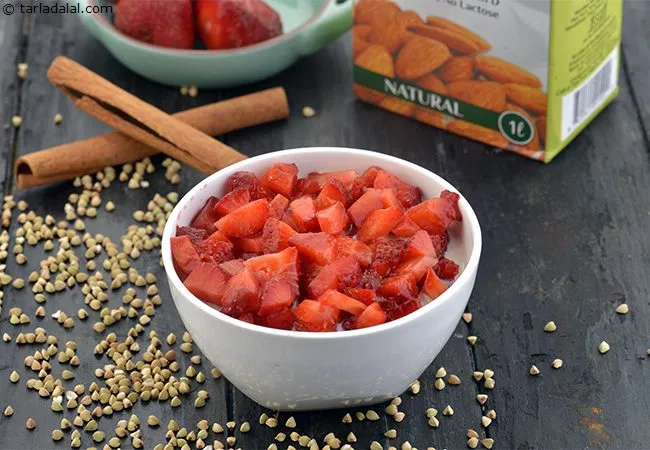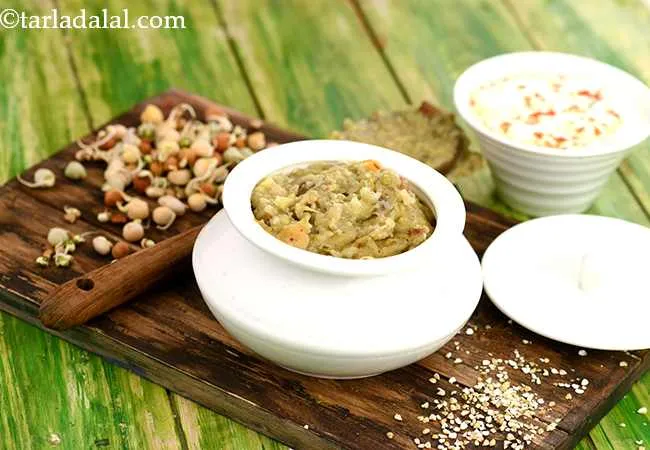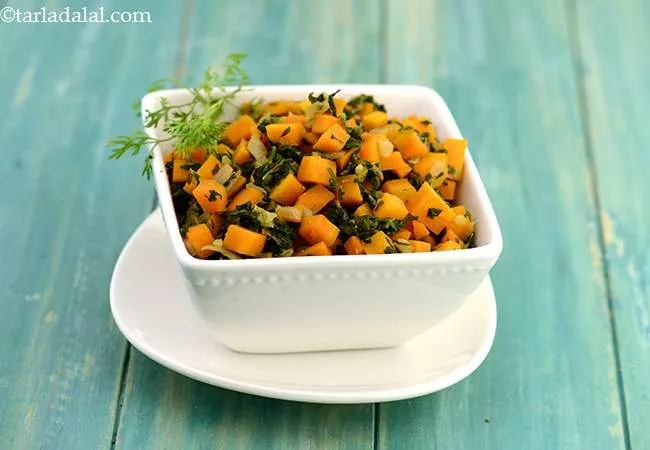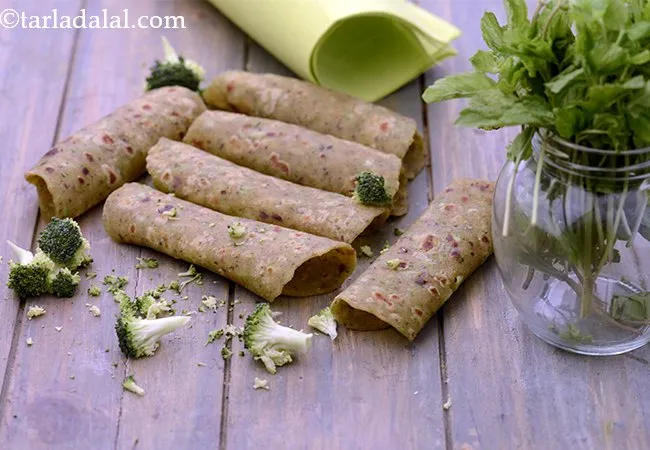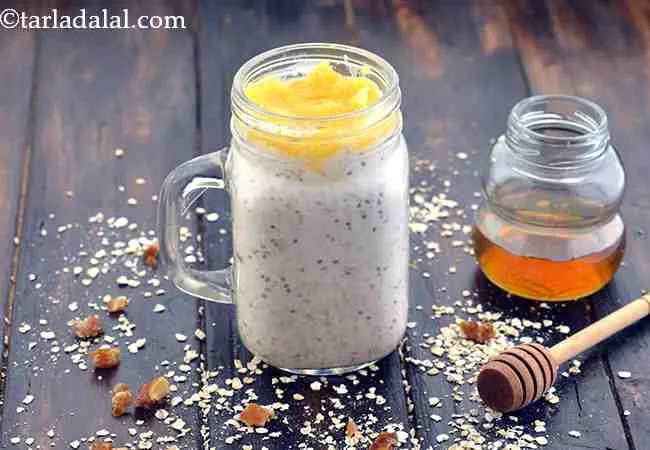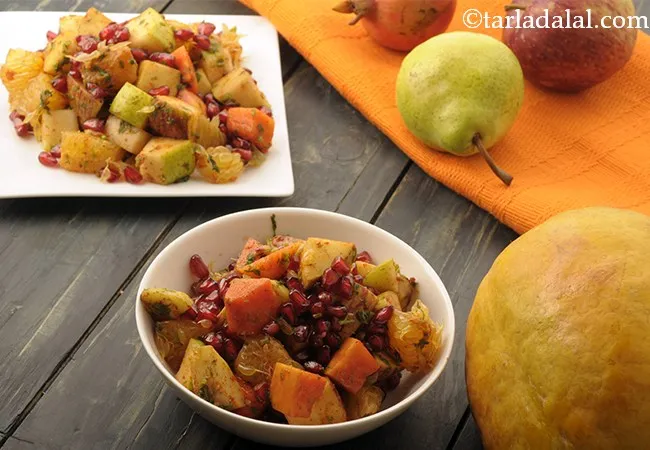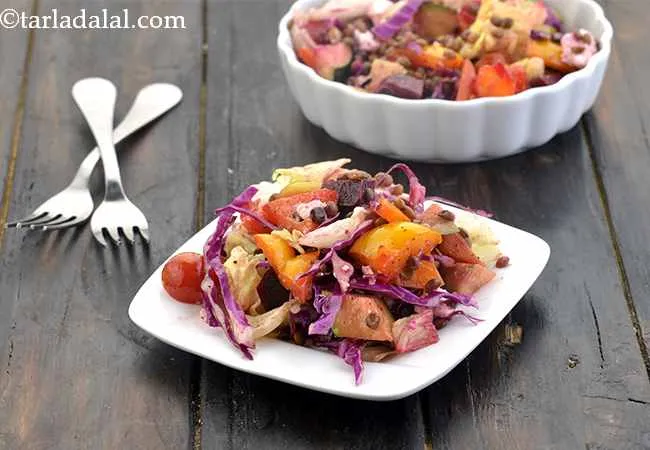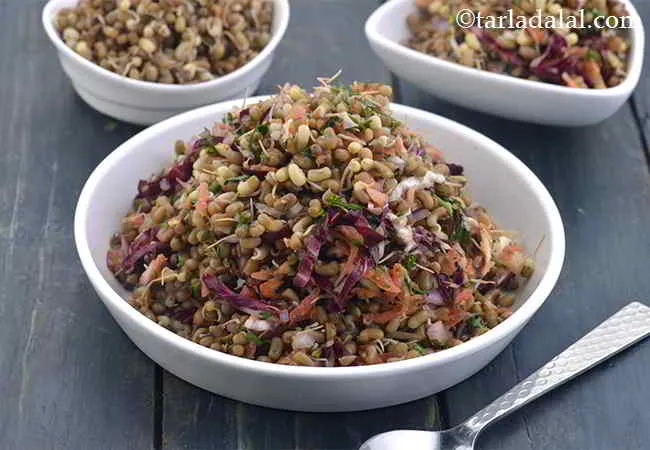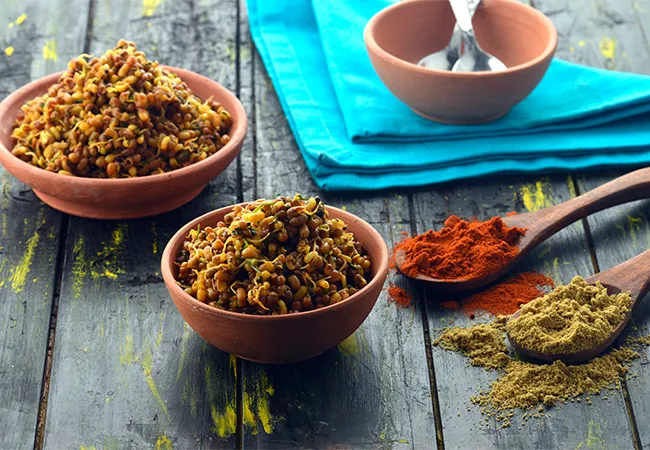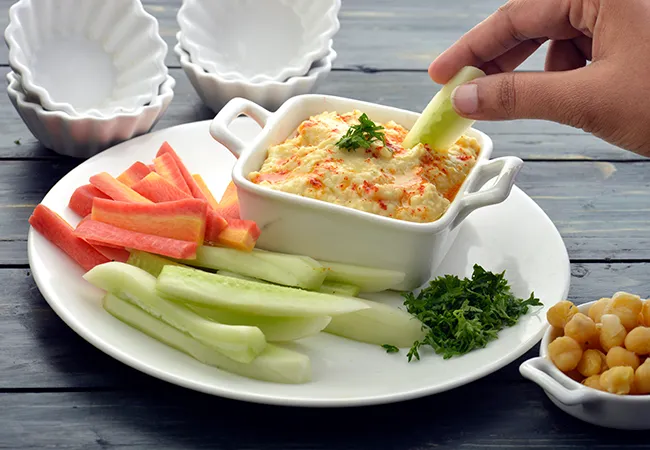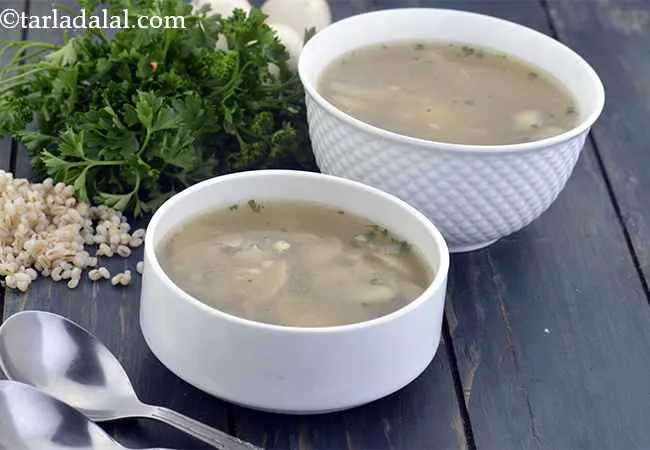Search & Articles
Search from thousands of articles from sabzi, roti, chawal, dal, paneer, Indian recipes to health articles.
Indian Foods, Recipes Rich In Complex Carbs
This article page has been viewed 78394 times

Indian Foods, Recipes Rich in Complex Carbs
Table of Content
Indian Foods, Recipes Rich in Complex Carbs
The Indian diet, at its core, is a rich tapestry of complex carbohydrates, forming the very foundation of meals across the subcontinent. Unlike simple carbohydrates which provide quick, fleeting energy, complex carbohydrates are composed of longer chains of sugar molecules, leading to slower digestion and a sustained release of glucose into the bloodstream. This makes them the ideal energy source for maintaining stable blood sugar levels, promoting satiety, and providing consistent energy throughout the day. The traditional Indian plate, with its emphasis on grains, legumes, and certain vegetables, naturally incorporates these beneficial carbs.
Whole Grains are paramount in the Indian diet's complex carbohydrate profile. Wheat (atta), especially in North, West, and parts of Central India, is a primary source. It's transformed into staples like rotis, chapatis, parathas, and puris, which accompany almost every meal. Rice, particularly brown rice or traditional unpolished varieties, is the dominant grain in South and East India. While often perceived as a simple carb, the fiber content in brown rice makes it a complex carbohydrate, providing sustained energy and aiding digestion.
Millets represent another incredibly important category of complex carbohydrates, particularly in drier regions of India. Grains like Bajra (pearl millet), Jowar (sorghum), and Ragi (finger millet) are nutrient powerhouses. They are naturally gluten-free and packed with fiber, protein, and essential minerals. These millets are commonly used to make dense, wholesome rotis or bhakris, providing a steady stream of energy and significant satiety, making them excellent choices for those seeking healthier alternatives to refined grains.
Legumes and Pulses (Dals) are arguably one of the most unique and beneficial sources of complex carbohydrates in the Indian diet. Varieties like Toor Dal (pigeon pea), Moong Dal (green gram), Masoor Dal (red lentil), Chana Dal (split chickpea), and Rajma (kidney beans) are not only rich in complex carbs but also provide substantial amounts of plant-based protein and dietary fiber. This combination makes them highly satiating and contributes to stable blood sugar levels, making them excellent for managing weight and diabetes.
Certain Starchy Vegetables also contribute significantly to the complex carbohydrate intake in Indian cuisine. Potatoes are widely consumed across India and are a source of complex carbs, often found in various curries (aloo sabzi, aloo gobi) and snacks. Sweet potatoes are another nutritious option, packed with fiber and beneficial compounds. Root vegetables like yam (suran) and tapioca (sabudana), though used more seasonally or for specific dishes, also provide complex carbohydrates.
Finally, Fruits in the Indian diet offer natural sugars alongside valuable fiber, contributing to the complex carbohydrate intake. Bananas, mangoes (in season), apples, and various berries are popular choices. While fruits contain natural sugars, the fiber within them helps regulate their absorption, preventing rapid sugar spikes. Incorporating a variety of these complex carbohydrate-rich foods into daily meals is central to the traditional Indian diet's nutritional balance, providing sustained energy and contributing to overall health and well-being.
What are Complex Carbohydrates?
Complex carbohydrates are essentially long strings of sugar molecules that your body breaks down slowly. Unlike simple carbs that cause quick sugar rushes, complex carbs provide a steady, sustained release of glucose into your bloodstream. Packed with fiber, vitamins, and minerals, you'll find them in foods like whole grains, legumes, and many vegetables. They're great for long-lasting energy, keeping you feeling full, and supporting a healthy digestive system.
Why do you need carbohydrates?
You need carbohydrates primarily because they are your body's main and preferred source of energy. When you consume carbohydrates, your body breaks them down into glucose, which is then used by your cells,1 tissues, and organs, including your brain, for fuel. This readily available energy powers all bodily functions, from basic metabolic processes to physical activity and cognitive functions. Without adequate carbohydrates, your body would turn to protein or fat for energy, which is a less efficient process and can impact other vital bodily functions.
Buckwheat Groats Strawberry Porridge.
Buckwheat Groats Strawberry Porridge
Why are complex carbohydrates a better choice?
- Complex carbohydrates take longer to break down since their molecule structure is larger. Also, most complex carbohydrates have a plenty of fiber which moves slowly through the digestive tract. On the other hand, foods that are made up of simple carbohydrates, like - candy, pastries, refined pasta and sugar based sweets, all of them are an instant source of energy and are digested very quickly giving a rapid swing to your blood sugar. Because of which the person may feel hungry again soon after.
- Complex Carbs help us to feel satiated and full for a longer time and help in portion and eating control. Whole grains, beans, fruits and vegetables have complex carbohydrates.
- In addition to regulating blood sugar, complex carbohydrates are power packed with many nutrients, they are rich in fiber, vitamins, minerals and antioxidants that simple carbohydrates may not have.
Other benefits of Complex Carbohydrates
Certain carbs like oatmeal, sweet potatoes, bananas and brown rice contain large amounts of tryptophan, which relax the body and help you to get a sound sleep. Oatmeal even helps your body to produce melatonin, the hormone that regulates your sleep. Your body also uses carbohydrates for optimal brain function. Foods such as vegetables, oats, legumes, nuts and fruits all contain carbs that help in mental focus and aid in maintaining a healthy mood. Remember – Do not deprive your brain of carbs! It needs them!
Common Indian Foods Rich in Complex Carbohydrates
1. Whole Grains are rich in complex carb:
Whole grains like barley, buckwheat, oatmeal, quinoa, bulgur wheat are rich in complex carbs. These are the healthiest grains as they are not processed. This is the same reason that they are rich in fiber. They abound in other nutrients like potassium, magnesium and phosphorus as well.
Whole grains are fantastic sources of complex carbohydrates, providing sustained energy and a wealth of nutrients. Here are 10 top whole grains rich in complex carbs:
When we talk about "whole grains" in the Indian context, we're referring to grains that retain all three parts of their kernel: the bran (fiber-rich outer layer), germ (nutrient-packed core), and endosperm (starchy middle). These provide a wealth of complex carbohydrates, fiber, vitamins, and minerals.
Here are 10 top Indian whole grains rich in complex carbs:
- Whole Wheat (Atta): The most widespread whole grain, used to make daily rotis, chapatis, and parathas across much of India.
.webp)
2.Bajra (Pearl Millet): A drought-tolerant millet, popular in Rajasthan, Gujarat, and Maharashtra, used for thick rotis, especially in winter.
.webp)
- Jowar (Sorghum): Another versatile millet, often used for rotis or bhakris in Western and Central India, and a good gluten-free option.
Ragi (Finger Millet / Nachni): Known for its high calcium content, Ragi is a staple in South India, used for rotis, mudde (dumplings), and even porridges.
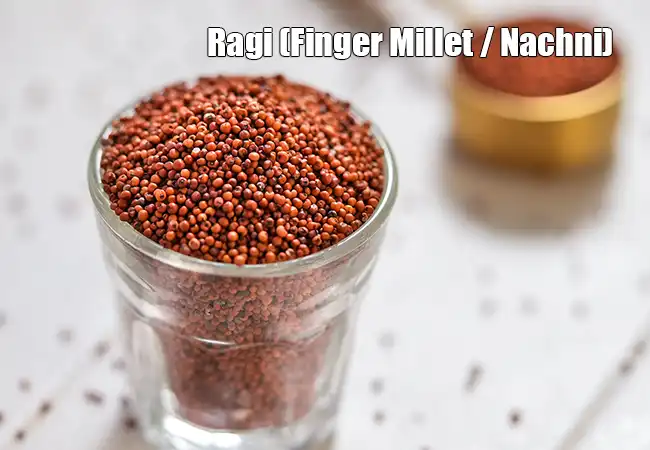
- Brown Rice: The unpolished form of rice, retaining its bran and germ, offering more fiber and nutrients than white rice. Common in South and East India.
- Barley (Jau): Historically used and gaining renewed popularity, barley is rich in fiber and often consumed as flour for rotis or in porridges (dalia).
Oats: While not traditionally Indian, oats (especially whole rolled oats or steel-cut oats) have become very popular for breakfast cereals and healthy snacks in India.
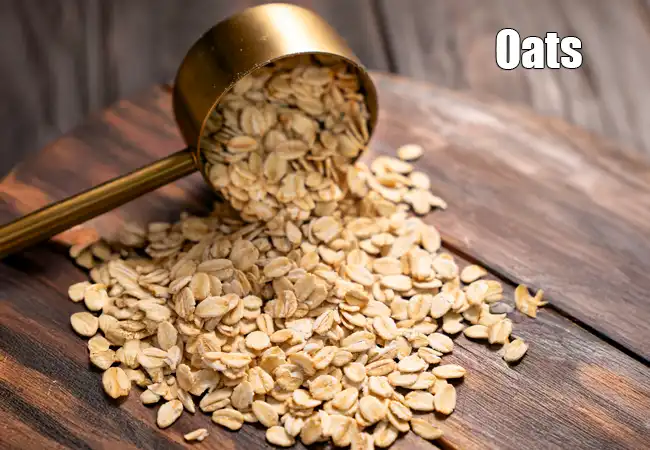
- Amaranth (Rajgira): A pseudo-cereal, meaning it's botanically a seed but used like a grain. It's gluten-free, high in protein, and often used during fasting periods for rotis, laddus, or porridges.
- Buckwheat (Kuttu): Another pseudo-cereal, commonly consumed during fasting in North India, used to make Kuttu ki Puri or Cheela.
- Various Minor Millets: This category includes a range of other nutritious millets like Foxtail Millet (Kangni/Thinai), Kodo Millet (Kodra/Varagu), Barnyard Millet (Sanwa/Kuthiraivali), and Little Millet (Kutki/Samai). These are traditionally consumed in various regional dishes and are experiencing a resurgence due to their health benefits and complex carb profile.
Try Quinoa Veg Upma for breakfast. Quinoa upma recipe is a truly healthy recipe made as a replacement to rava upma. What makes it healthy vegetable quinoa upma? The addition of veggies, peanuts and lemon juice.
Quinoa Veg Upma, Vegan Breakfast
At lunch time you can indulge in Buckwheat and Sprouts Khichdi. Filled with protein, complex carbs, fiber and antioxidants it is a wise choice.
Buckwheat and Sprouts Khichdi
2. Indian Vegetables rich in complex carbs:
When identifying Indian vegetables rich in complex carbohydrates, we're looking beyond just greens and focusing on those that provide substantial energy through their starchy nature and fiber content. While nearly all vegetables contain some carbohydrates, the following are particularly notable for their complex carb contribution in the Indian culinary context:
Potatoes (Aloo): Undeniably the most common and versatile complex carb vegetable in India. Used in countless curries (aloo gobhi, dum aloo), snacks (samosas, aloo tikki), and even in lentil preparations, potatoes offer significant starch and potassium.
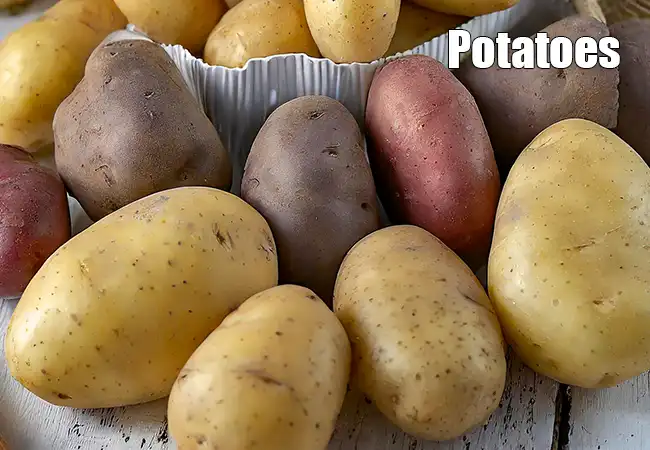
- Sweet Potatoes (Shakarkandi): A healthier alternative to regular potatoes, sweet potatoes are packed with complex carbs, fiber, and an abundance of vitamins (especially Vitamin A) and minerals. They are often boiled, roasted, or used in savory and sweet dishes.
Green Peas (Matar): A popular addition to many Indian dishes, from curries (matar paneer) to rice dishes (matar pulao) and snacks (samosa filling). Peas are surprisingly high in complex carbs and fiber, along with protein.
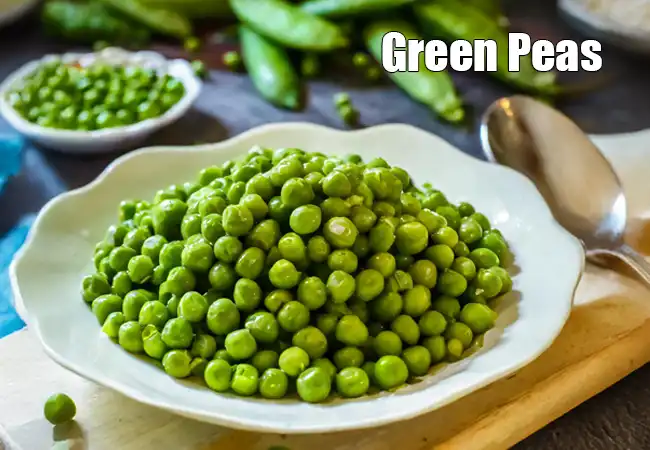
- Yam (Suran/Jimikand): A root vegetable commonly used in regional Indian cooking, particularly in traditional curries and stir-fries. It's a good source of complex carbohydrates and dietary fiber.
- Taro Root (Arbi/Colocasia): Another starchy root vegetable, arbi is frequently used in dry preparations or curries. It provides complex carbs and contributes to satiety.
Corn (Bhutta/Makka): While often enjoyed grilled on the cob, corn kernels are used in various Indian dishes, including vegetable mixes, salads, and even some fritters. It's a good source of complex carbohydrates and fiber.
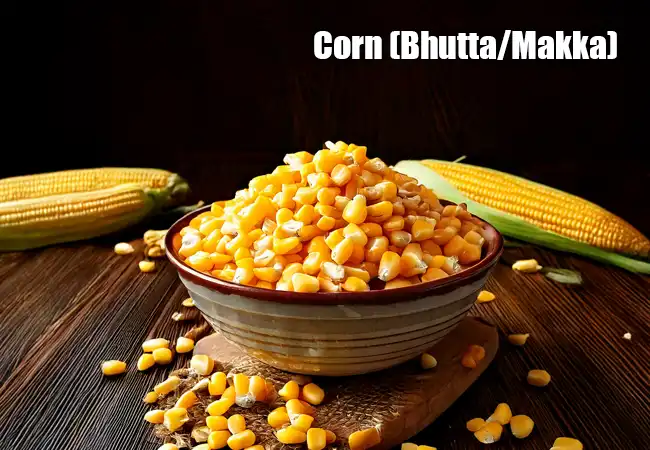
- Jackfruit (Kathal): When consumed raw or unripe (as it often is in curries and sabzis), jackfruit has a starchy texture and provides a good amount of complex carbohydrates, often used as a "vegetable meat" substitute due to its fibrous texture.
- Plantains (Kaccha Kela): Unripe or green plantains are used extensively in South Indian and some Eastern Indian cuisines in curries, stir-fries, and chips. They are very rich in resistant starch, a type of complex carb that acts like fiber.
- Beetroot (Chukandar): While having natural sugars, beetroot also contains a good amount of complex carbohydrates and fiber. It's used in salads, raitas, and sometimes in curries.
- Butternut Squash (Kaddu): While lesser known than some other gourds, butternut squash is a starchy winter squash that is gaining popularity. It's rich in complex carbs, fiber, and vitamins, often used in sweet and savory preparations.
These veggies are best used to make Indian sabzis like Carrot Methi Subzi. However, potatoes should not considered as a complete culprit. A medium cooked potato is a good source of potassium.
Carrot Methi Subzi ( Delicious Diabetic Recipe)
However, you can innovatively use them to make Broccoli Paratha. Add them to your daily foods and it is not so very difficult to make up for your daily requirement of healthy carbs.
Broccoli Paratha ( Tiffin Treats)
3. Indian Fruits rich in complex carbohydrates:
While many fruits contain natural sugars (a type of carbohydrate), the presence of dietary fiber is what elevates some to be considered good sources of complex carbohydrates, leading to a slower and more sustained energy release. In the Indian context, several commonly available fruits fit this description.
Here are 10 Indian fruits that are rich in complex carbohydrates:
Banana (Kela - केला): A universally popular fruit, bananas are an excellent source of complex carbs, particularly resistant starch when slightly unripe, along with potassium.
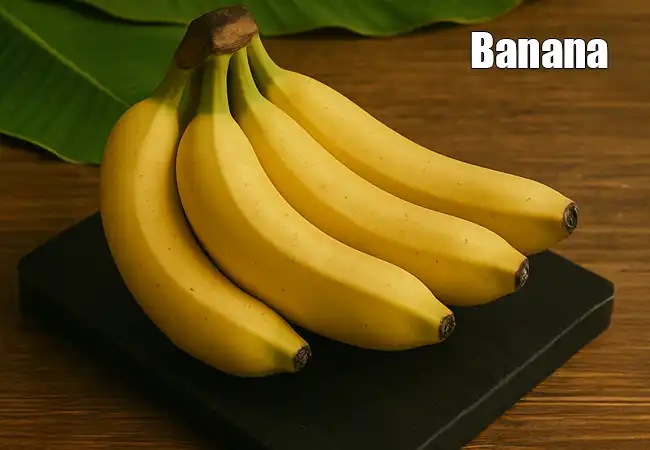
Mango (Aam - आम): The "king of fruits" in India, mangoes are rich in natural sugars, but also provide significant fiber, especially the less ripe ones, and a host of vitamins and antioxidants.
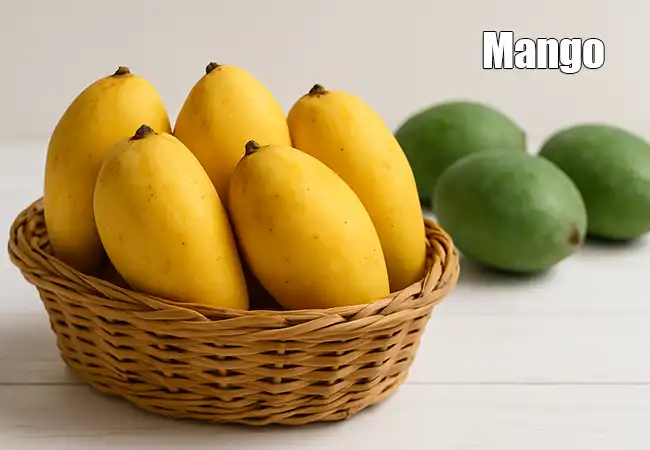
- Guava (Amrood - अमरूद): This humble fruit is a fantastic source of dietary fiber, making its natural sugars behave more like complex carbs. It's also packed with Vitamin C.
Apple (Seb - सेब): Widely consumed and available, apples offer a good balance of natural sugars and soluble fiber (pectin), contributing to sustained energy.
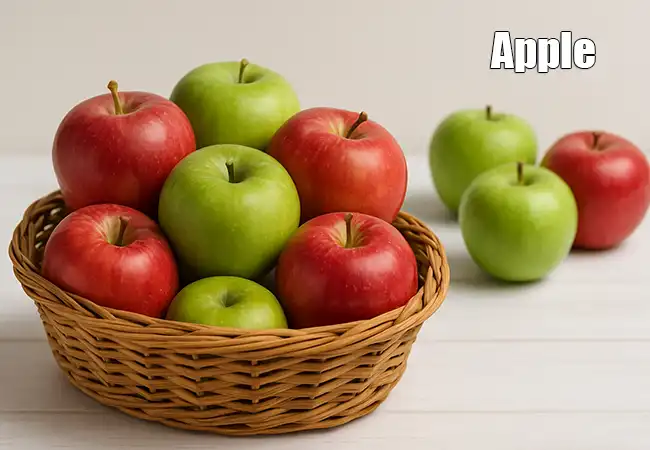
- Chikoo / Sapota (Chikoo - चीकू): A sweet, pulpy fruit that is a good source of energy, fiber, and natural sugars, making it a decent complex carb option.
- Jackfruit (Kathal - कटहल): When ripe, jackfruit is incredibly starchy and fibrous, providing a substantial amount of complex carbohydrates. It's often used as a vegetable when unripe.
- Pomegranate (Anar - अनार): While its arils contain natural sugars, pomegranate is also a good source of fiber, particularly in its seeds, and powerful antioxidants.
- Custard Apple (Sitaphal - सीताफल): A delicious and creamy fruit, custard apple is rich in natural sugars, but also provides good amounts of fiber and essential minerals.
- Lychee (Litchi - लीची): A seasonal fruit that, despite its sweetness, contains a fair amount of fiber along with its natural sugars, contributing to its complex carb profile.
- Indian Blackberry / Jamun (Jamun - जामुन): While known for its slightly tart taste, Jamun is a good source of complex carbohydrates and dietary fiber, often consumed during the monsoon season and particularly noted for its potential benefits for diabetics.
Fruits are best had whole. Also try and keep the skin of fruits like apple, pear etc. intact. Do not peel them, as most of the fiber lies just beneath the skin.
Alternatively include them as a part of salads like Grapefruit and Green Apple Salad. The flavours in this salad complement each other beautifully, making this a salad you will really enjoy snacking on.
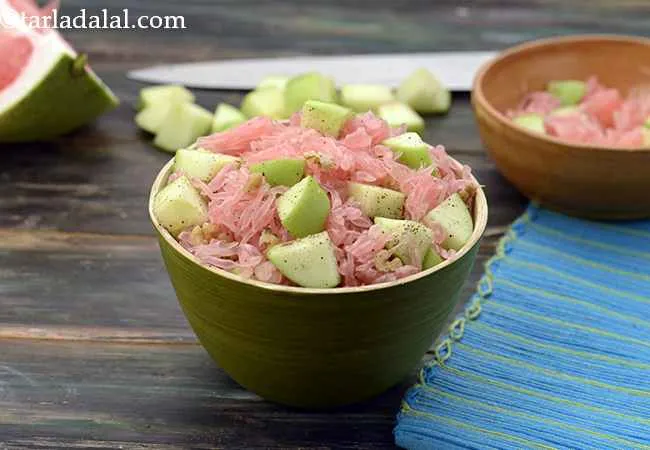 Grapefruit and Green Apple Salad
Grapefruit and Green Apple Salad
It is a wise choice to include them for breakfast in the form of Oatmeal Almond Milk with Oranges too! All you need to do is put all the ingredients into a jar, give it a shake and stow it into the fridge. After it sits there for a few hours, it sets beautifully and becomes a satiating and super tasty breakfast.
Oatmeal Almond Milk with Oranges, Healthy Breakfast
Yet looking for something more interesting? Then try this Mixed Fruit Chaat. Chopped and chilled fruits are tossed with spice powders that are typically used in chaats, gives a juicy, crunchy, peppy flavoured treat that will refresh your taste buds.
Mixed Fruit Chaat, Diabetic Friendly Recipe
4. Indian Beans and Pulses rich in complex carbohydrates:
Indian cuisine is incredibly rich in beans and pulses, which are fantastic sources of complex carbohydrates, alongside protein and fiber. These legumes form the backbone of vegetarian diets across the country.
Here are 10 top Indian beans and pulses rich in complex carbohydrates:
Toor Dal (Pigeon Pea / Arhar Dal): A staple across India, especially in the central and southern regions, used in daily dals, sambar, and Gujarati dal.
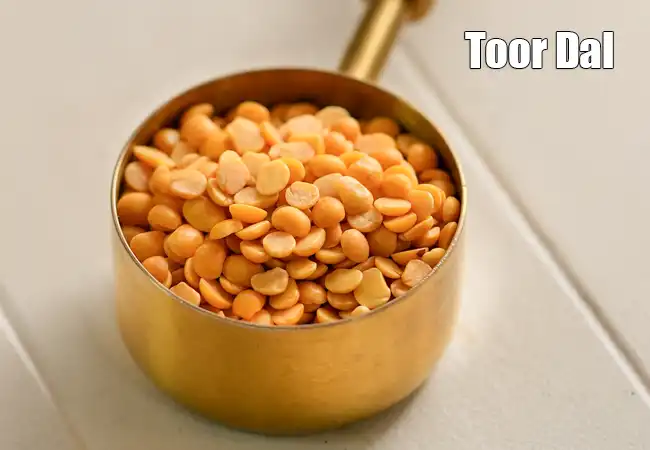
- Moong Dal (Green Gram): Available whole or split (yellow moong dal), it's very popular for its easy digestibility, used in dals, khichdi, and sprouts.
Masoor Dal (Red Lentil): A quick-cooking lentil, widely used for daily dals and soups due to its mild flavor and soft texture.
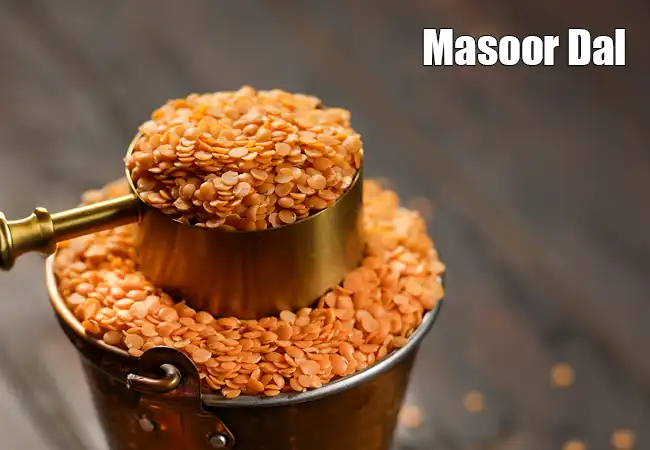
- Kabuli Chana (White Chickpea): Known for its use in Chole, this larger chickpea is a versatile ingredient in curries, salads, and snacks like chana chaat.
- Kala Chana (Black Chickpea / Bengal Gram): The smaller, darker variety of chickpea, often used in dry curries (sukhi sabzi), sprouts, and roasted as a snack.
Rajma (Kidney Beans): A very popular bean, especially in North Indian cuisine, famous for the hearty dish "Rajma Chawal."
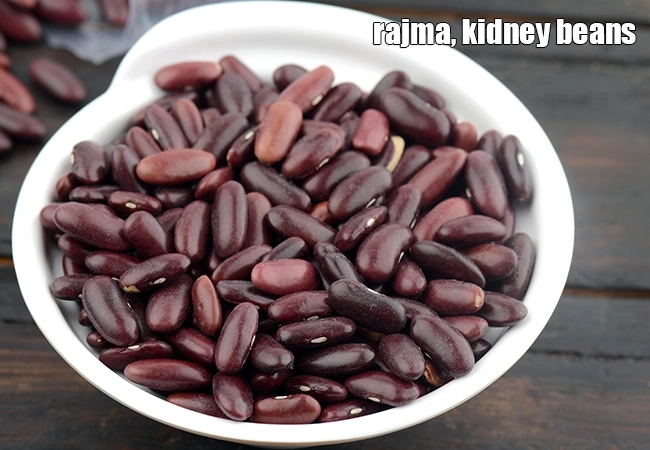
- Urad Dal (Black Gram): Used whole or split (skinned, white urad dal), it's a key ingredient in South Indian staples like dosa, idli, and vada, as well as various dals.
- Lobia (Black-Eyed Peas): Widely consumed in North India, used in curries, salads, and sometimes as a snack.
- Chana Dal (Split Chickpea Lentil): The split version of Kala Chana, used in various dals, often added to vegetable preparations for texture, and ground into besan (gram flour).
- Vaal Dal (Field Beans / Lablab Beans): Particularly popular in Gujarat and Maharashtra, used in distinct sweet and sour curries (vaal nu shaak) and sprouted preparations.
Masoor Beets Zucchini Peppers Lunch Salad
Masoor, Beets, Zucchini , Peppers Lunch Salad, Healthy Veg One Dish Meal
One other to have them is to sprout them. Sprouting not only makes them easy to digest, but also increases the nutrient count by manifold. Learn how to make Matki Sprouts.
Sprouted and Boiled Matki
Once you have mastered the art of making sprouts, use them more creatively. Toss them with some spices and cook them like Matki Sabzi. This sprouted matki ki sabzi is a dry preparation that is usually served with phulkas and Kadhi. Learn how to make matki sabzi in a step-by-step fashion.
Matki Sabzi
What is the Takeaway?
So, the type of carbs you would like to avoid are all the refined and processed grains. Also avoid a very high intake of sugary foods that just give you empty calories. Instead have more of complex carbohydrates that is power packed with a number of essential nutrients and also helps to maintain your waist line! Add more plants to your plate as they are the best source of complex carbs.
Spicy Garlic Hummus
For example, instead on munching chips, try raw veggies with Spicy Garlic Hummus ! Instead of having rice and pasta, have whole grains and whole wheat pasta. Common complex carbohydrates include – lentils, beans, whole grain products, brown rice, corn, wheat, barley, oats, quinoa, tomato, broccoli, spinach and a lot of other fruits and vegetables. Try Mushroom Barley Soup as a healthy appetizer to a meal. You could also include low fat dairy products in your diet!
Mushroom Barley Soup Recipe , Healthy Vegan Soup
So choose your diet plan wisely! Make informed choices!
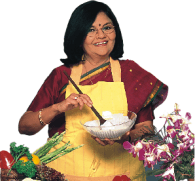
Related Articles
Follow US
Recipe Categories
- Vitamin B12 Cobalamin Rich Recipes 33 recipes
- Low Calorie, Weight Loss Indian Recipes 421 recipes
- Low Cholesterol Indian Recipes 308 recipes
- Healthy Indian Breakfast 373 recipes
- Indian Diabetic recipes 559 recipes
- Indian Pregnancy recipes 461 recipes
- Zero Oil Indian Recipes 133 recipes
- Iron Rich Indian recipes 268 recipes
- Healthy Indian Acidity recipes 136 recipes
- Healthy Sabzis 108 recipes
- Indian Healthy Veg Snack 276 recipes
- Healthy Heart Recipes 415 recipes
- Healthy Veg Indian Soups 74 recipes
- Calcium Rich Indian Recipes 373 recipes
- High Blood Pressure Indian Recipes 103 recipes
- Healthy Indian Salads Recipes 137 recipes
- Low Carb Indian Diet, recipes 163 recipes
- Hypothyroidism Diet 63 recipes
- Arthritis Diet 68 recipes
- High Protein Indian recipes 95 recipes
- Vitamin K Diet 42 recipes
- Fatty Liver Diet 39 recipes
- PCOS 136 recipes
- Gluten Free Veg Indian 196 recipes
- High Fiber 328 recipes
- Indian Cancer Patients 275 recipes
- Jaundice Diet 45 recipes
- Sprouts 61 recipes
- Typhoid 43 recipes
- Irritable Bowel Syndrome (IBS) 23 recipes
- Kidney Stone Diet 10 recipes
- Home Remedies 213 recipes
- Senior Citizen 195 recipes
- Healthy Indian Drinks and Juices 213 recipes
- Diet for Dialysis 10 recipes
- Gout Indian Recipes 17 recipes
- Potassium Rich 80 recipes
- Vegan 195 recipes
- Indian recipes to treat Vomiting 8 recipes
- Forever Young Diet, Anti Aging Indian Diet 255 recipes
- Antioxidant Rich Indian 445 recipes
- Vitamin B1 Rich Indian Foods, Recipes 101 recipes
- High in Omega 3 Fatty Acids 32 recipes
- Zinc Rich Foods 55 recipes
- Vitamin A Rich, Beta Carotene, Retinol 89 recipes
- Malaria Diet 19 recipes
- Magnesium Rich 94 recipes
- Healthy Indian Dinner 85 recipes
- Vitamin C Rich Indian recipes 118 recipes
- Low Veg Glycemic Index 86 recipes
- Lower Blood Pressure Salads 8 recipes
- Healthy Indian Lunch Recipes 29 recipes
- Lactation 25 recipes
- Vitamin E Rich 51 recipes
- Hyperthyroidism Diet 47 recipes
- Vitamin B3, Niacin Rich 41 recipes
- Post Surgery Diet 42 recipes
- Selenium 27 recipes
- Phosphorus Rich Indian Recipes, Foods 74 recipes
- Lower Blood Pressure Desserts Sweets 14 recipes
- Copper 15 recipes
- Foods Rich in Vitamin B2 Riboflavin 22 recipes
- Vitamin B6 Diet 36 recipes
- B Vitamins 231 recipes
- Vitamin B9 Rich Folate 50 recipes
- Marathoners, Endurance Athletes, Triathlete 225 recipes
- Manganese Diet 32 recipes
- Thalassemia 18 recipes
- Detox Water, Fruit Infused Water 42 recipes
- Lactose Free Dairy Free 22 recipes
- Omega 6 Fatty Acids 32 recipes
- Phytonutrients 51 recipes
- Chronic Kidney Disease Indian recipes 12 recipes
- Selenium1 0 recipes
- Quick Snacks / Quick Starters 385 recipes
- Quick Breakfast Indian 131 recipes
- Quick Sabzis 117 recipes
- Quick Rotis / Parathas 46 recipes
- Quick Indian Sweets 139 recipes
- Quick Stir-Fries 51 recipes
- Quick Vegetarian Indian Soups 72 recipes
- Quick Chutneys 67 recipes
- Quick Vegetarian Rice, khichdi Recipes 56 recipes
- Indian snacks under 10 minutes 44 recipes
- Quick Indian Dips, Gravies & Sauces 105 recipes
- Quick Veg Indian Pizza 17 recipes
- Quick Veg Pasta 25 recipes
- Quick Pickles / Aachar 25 recipes
- Quick Dals / quick Kadhis 29 recipes
- Snacks under 5 minutes 33 recipes
- Quick Healthy Recipes 43 recipes
- Quick Pressure Cooker 46 recipes
- Quick Desserts 47 recipes
- Quick 3 Ingredients 63 recipes
- Quick Indian Desserts 20 recipes
- Quick 4 Ingredients 41 recipes
- Quick 5 Ingredients 42 recipes
- Kids Tiffin Box 319 recipes
- Recipes for Toddlers (1-3 Years) 32 recipes
- Sweet Recipes for Kids 456 recipes
- Recipes for Baby (10 to 12 Months) 17 recipes
- Quick Indian recipes for Kids 72 recipes
- Indian Breakfast Recipes for Kids 192 recipes
- Recipes for Weaning (8 to 9 months) 22 recipes
- Healthy Foods for Kids 196 recipes
- Snack Recipes for Kids 619 recipes
- Recipes Kids can make 36 recipes
- Kids After School 794 recipes
- Kids Jar Snacks 66 recipes
- Finger Foods for Babies, Toddlers and Kids 76 recipes
- Kids Weight Gain 43 recipes
- Kids Wraps and Rolls 23 recipes
- Kids Veg Pasta 27 recipes
- Kids Brain Boosting 68 recipes
- Protein rich food for kids 71 recipes
- Recipes for Weaning 15 recipes
- Kids Pizzas 30 recipes
- Babies, Toddler and Kids Iron Rich Foods 31 recipes
- High Fiber Foods for Kids 39 recipes
- Kids High Energy Indian Foods 103 recipes
- Kids Noodles 37 recipes
- Kids Calcium Rich Indian recipes 92 recipes
- Babies recipes, 6 to 18 months 34 recipes
- Kids Recipes for Increasing Immunity 10 recipes
- Kids Weight Loss 58 recipes
- Teething Recipes for Babies 10 recipes
- Cereals and Pulses for 8 to 9 months Baby 8 recipes
- Weaning foods at 7 months 12 recipes
- Indian Teen 315 recipes
- Starters / Snacks 2138 recipes
- Indian Breakfast Recipes 819 recipes
- Main Course Recipes 925 recipes
- Indian Salads 385 recipes
- Indian Desserts , Sweets 985 recipes
- Indian Soups 249 recipes
- Indian Beverages, Indian Drinks 483 recipes
- Indian Dinner 903 recipes
- Indian Dinner1 0 recipes
- Indian Lunch 829 recipes
- Side Dishes 449 recipes
- Indian Travel Food 433 recipes
- Indian Barbeque1 recipes 22 recipes
- Frozen Foods, Indian Freezer Recipes 67 recipes
- Whole Wheat Recipes 56 recipes
- Indian Comfort Foods 212 recipes
- Dinner Menus 56 recipes
- Easy Indian Veg 70 recipes
- Innovative Indian Recipes 27 recipes
- No Cook Indian 37 recipes
- Advanced Recipes 10 recipes
- Cakes with Eggs 13 recipes
- Microwave 229 recipes
- Oven 619 recipes
- Indian Steamer Recipes 102 recipes
- Kadai Veg 407 recipes
- Indian Barbeque Recipes 43 recipes
- Sizzler tray 15 recipes
- Mixer 566 recipes
- Pressure Cooker 315 recipes
- Tava 647 recipes
- Non-stick Pan 1393 recipes
- Indian Freezer recipes, meals 57 recipes
- Appe Mould 18 recipes
- Pan 223 recipes
- Non Stick Kadai Veg 203 recipes
- kadai Indian 150 recipes
- Refrigerator 176 recipes
- Waffle Indian recipes 6 recipes
- Handi 12 recipes
- Juicer and Hopper 65 recipes
- Grill 31 recipes
- Toaster 21 recipes
- Gas Toaster 8 recipes
- Steam 72 recipes
- No Cooking Veg Indian 335 recipes
- Vegetarian baked Indian recipes 380 recipes
- Boiled Indian recipes 129 recipes
- Deep Fry 260 recipes
- Indian Tawa 265 recipes
- Shallow Fry Indian 25 recipes
- Microwave1 172 recipes
- Saute 273 recipes
- Indian Pressure Cooker 171 recipes
- Stir-fry 101 recipes
- Roasting 0 recipes
